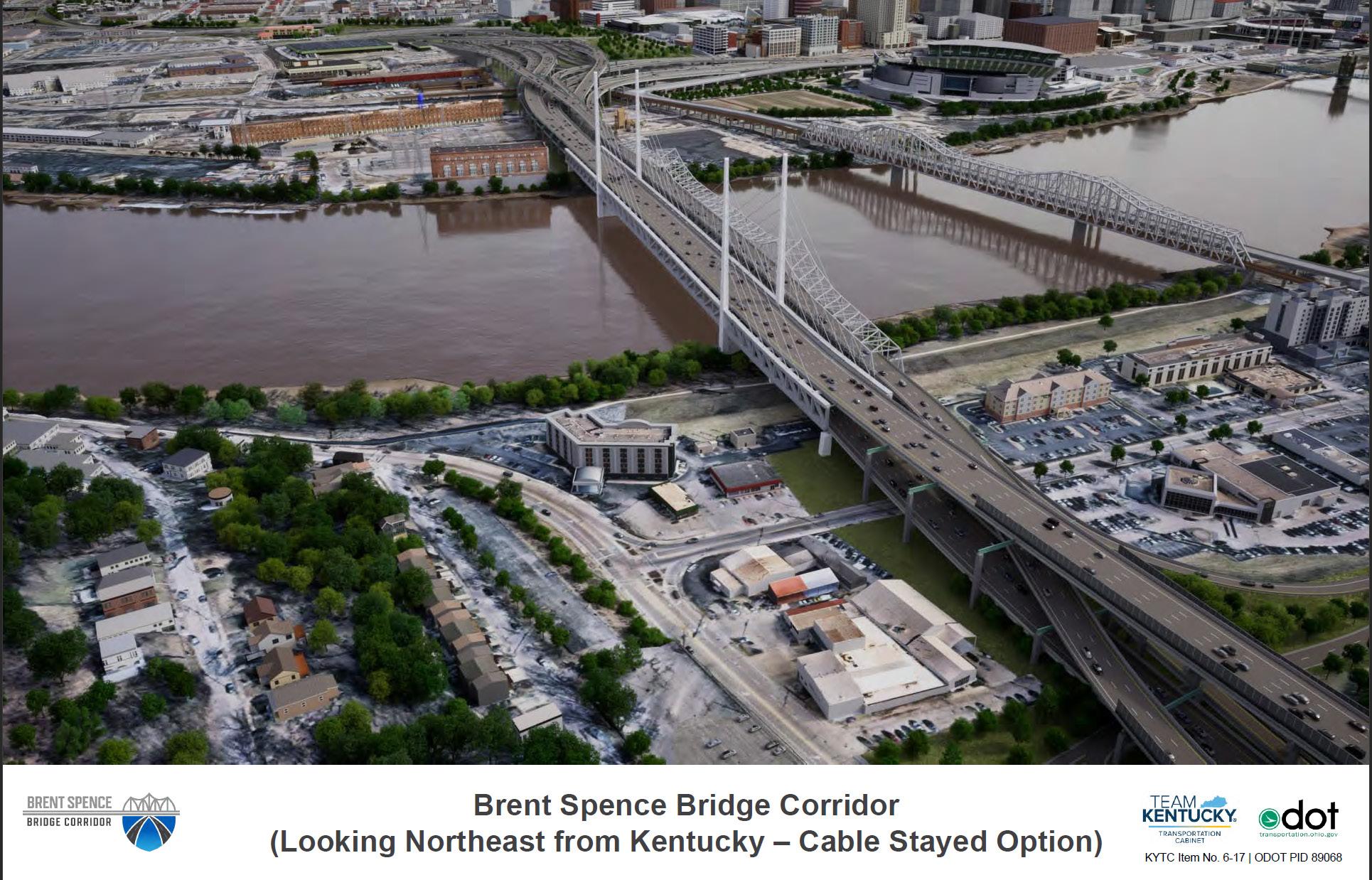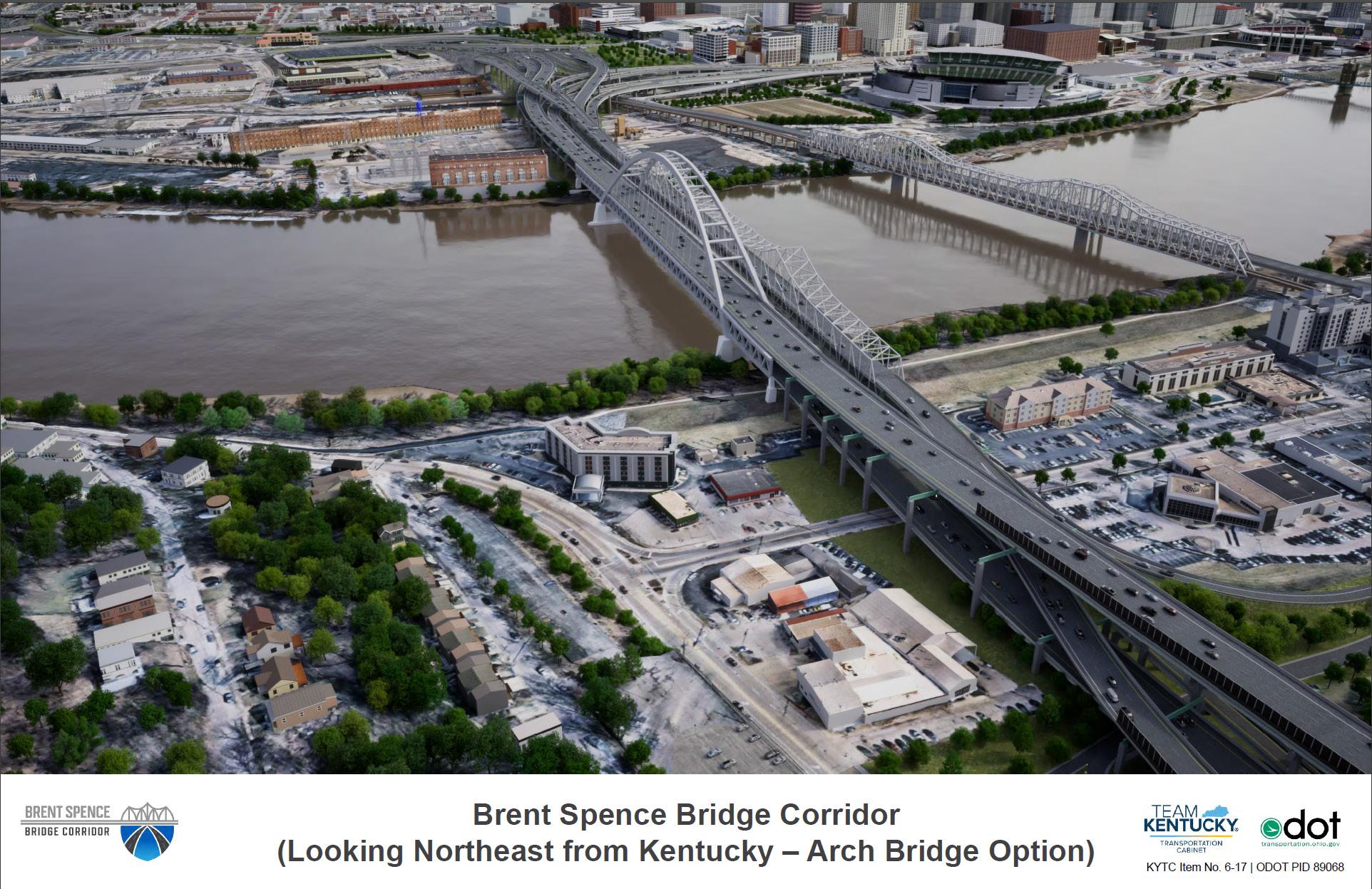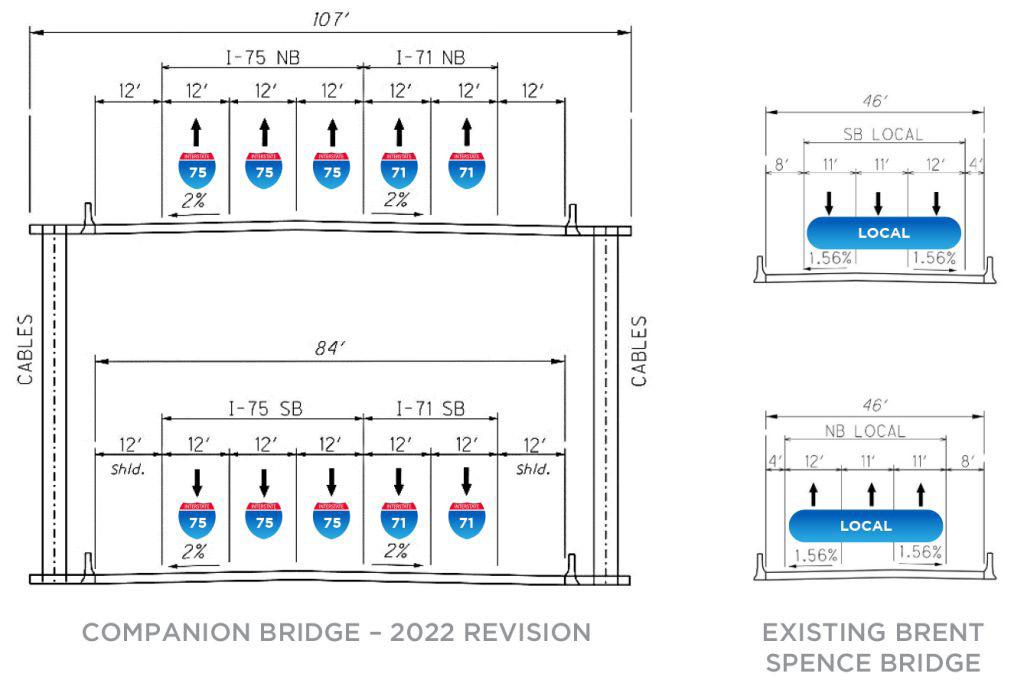
3 minute read
FIND YOUR SIPPING POINT
now runs.
“It’s all gone,” he said.
The transportation cabinet has been making efforts to reduce both the number of properties the construction will affect as well as the bridge’s overall footprint.
“We heard comments from the city of Covington, from various website comments through feedback that we’re getting from the public,” said Stacee Hans, the Kentucky Transportation Cabinet’s project manager for the corridor project. “Are there opportunities to reduce the footprint? They wanted us to go back and take another look and see if there’s that opportunity, which, fortunately, we were able to.”
In February, Hans and Kentucky Transportation Secretary Jim Gray made a presentation to the Kentucky House Budget Review Subcommittee on Transportation, where they announced that they had successfully reduced the number of residential reloca- tions from over 40 to just 4. In an interview with LINK nky, Hans also talked about how the addition of retaining walls and other alternative construction methods allowed the cabinet to reduce the width of the bridge from 172 feet to 107 feet.

Still, that doesn’t mean residents aren’t feeling the pressure.
John Saxton, the Covington resident who witnessed the traffic on Main Street after the bridge fire, lives near Goebel Park, which runs right along where the construction is slated to take place. He won’t have to move, but it’s hard for him not to think that his property won’t be affected.
“Compared to where the highway is now, in relation to my property and where the new roadways are going to be in relation to my property, the distance is being cut by about 60% to 70%,” Saxton said.
He’s thought about selling his property but said he is hesitant to do it before final plans
Continues on page 6
IMAGINE THIS…
an experience centered around five Kentucky Bourbon Trail Craft Tour® Distilleries.
Local bourbon-centric bars, all with a culture of their own, and all named to The Bourbon Review’s list of The Best Bourbon Bars in America. Finally, mix in amazing restaurants cultivating the freshest tastes in bourbon culinary delights and you’re on the The B Line® have been released.

What’s more, even though the number of residential properties being affected has gone down, other structures, including several schools, will abut the new corridor.
With all of this in mind, the question becomes, what are communities to do in the face of these realities?
Nicaise and the Devou Good Foundation have suggested tolls and other congestion mitigation measures, similar to those tried in Louisville, Washington, D.C., and parts of California, as a way of offsetting expense and managing traffic, rather than relying on a new bridge.
These proposals have proven unpopular among the rest of Covington’s leadership, however, for fear of reliving the traffic overflows that followed the fire. What’s more, both leaders and residents worried that tolls could lead to drivers taking detours across the Clay Wade Bailey and Roebling bridges, which could put more stress on local infrastructure.

Meanwhile, Fort Mitchell and Fort Wright have already expressed support for cabinet design plans of new overpasses that will run through their cities. Overall, much of the region seems to have accepted the reality of the project, in spite of any trepidations rumbling in the background.
“There’s going to be some disruption for our communities, especially the Mainstrasse Village area,” said Covington Commissioner Ron Washington. “It’s a trade-off of some heartache right away for, hopefully, a good for the overall community.”
Meyer readily admits to the likelihood of short-term difficulties, as well.
“It’s going to be very difficult,” Meyer said, but he said the project is so far along at this point that completely eliminating it would be unrealistic.
A better way to think about it, he said, would be to ask how the city can best mitigate the disruptions.
“How do we lessen the frustration and anxiety and displacement that’s going to be accomplished?” Meyer asked.
Last year Meyer and other city officials managed to secure some concessions in negotiations with the state. These included the aforementioned reduction of the companion bridge width, which Meyer argued would mitigate any further damage to Lewisburg. The negotiations also yielded the elimination of tolls, a measure Meyer contended would prevent the kinds of stresses to local infrastructure that occurred after the bridge fire.
Finally, the city succeeded in acquiring a new storm sewer system for the Willow Run watershed, the largest watershed in the region, which currently relies on an outdated combined sewer overflow and storm water system that’s prone to flooding. The new storm water system would run north from 16th Street to the Ohio River and is designed to mitigate flooding problems along Highland Avenue and Euclid Avenue in the Peaselburg neighborhood. The state and federal governments will bankroll the sewer improvements.
“This fight is not over.” Meyer said. “This is a lot of ongoing work to make sure that as decisions are made, ... “they’re” as favorable for our people as possible.”
Construction on the new corridor is slated to begin in November. To view current design plans, timelines and studies or to leave a comment on the project, visit https:// brentspencebridgecorridor.com/.











